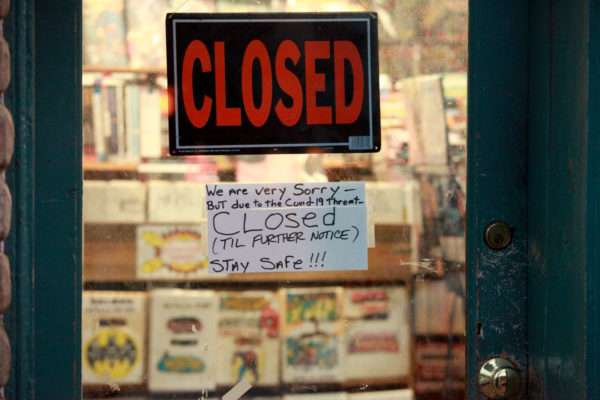In a memo to City Council, the Alexandria Economic Development Partnership (AEDP) laid out the path to recovery for Alexandria businesses as the city prepares to sift through the economic wreckage left in the wake of COVID-19
In a series of short term and longer-term phases, AEDP President and CEO Stephanie Landrum laid out a number of things the city can do to help support businesses in the city struggle to hold on through the pandemic.
On the shorter term, there were several tax and regulatory changes proposed by AEDP:
- Deferring and/or extending payment timelines for certain business taxes
- Suspending enforcement of certain regulations and special use permit conditions related to hours of operation, deliveries, off-premise alcohol sales, and outdoor sales and dining
- Suspending enforcement of certain parking restrictions
Some of that has already taken place, with the city easing up on some of its parking and loading requirements, as well as lengthening hours of operation.
Landrum said there other steps that have taken place, or are being planned, for the initial phase of March 16-June 10. Some of those done by AEDP, the Small Business Development Center (SBDC) or Visit Alexandria include:
- Creating “one-stop” newsletters and websites with regularly updated information on disaster assistance programs, policy/regulatory changes, and other initiatives.
- Dedicated staff to assist business owners who are impacted by COVID-19. Staff is focused on helping businesses understand local/state business restrictions, landlord/tenant issues, and any issue not related to federal disaster relief programs.
- ALX at Home, started on March 16, is a new platform launched to maximize revenues in the short term for businesses that remain open by adapting their sales format to current public safety requirements. The web hub highlights more than 150 ways residents can continue to support local businesses and includes 100+ restaurants, 50+ retail offerings, 11 museums and 6 arts organizations.
- Farmers’ Market To-Go, highlighting dozens of vendors offering advance orders and pick-up options at Alexandria’s farmers’ markets.
For the second phase, from June 10 to Sept. 30, Landrum said the main focus will be on trying to get access to some of the $1 million in state-level funds being made available to the GO Virginia program. Landrum said AEDP is working to make sure some of that funding goes to support regional programs that would benefit Alexandria.
For local businesses during that phase, Landrum said AEDP is planning a series of webinars to help businesses through stabilization and recovery.
“AEDP is collaborating with partners at the Northern Virginia Economic Development Alliance NOVA EDA to implement a multi-part, free webinar series to help guide businesses through the stabilization and recovery phases,” Landrum said. “The series covers topics that will help businesses that remain in operation to assess the damage from the COVID-19 crisis and create strategies to stabilize, recover, and grow their business.”
The final phase, starting Oct. 1 and continuing indefinitely, will involve researching recovery from previous economic downturns and learning what lessons worked, and what didn’t. Landrum said AEDP will lead a “Business Recovery Task Force” to continue to assess the damage and propose solutions.
While AEDP and Visit Alexandria have scaled back their marketing of Alexandria, Landrum said restoring that will be important once the travel restrictions lift.
Landrum also suggested that AEDP administer a city-backed grant program.
“The business grant program, [Name TBD], will provide grants to certain Alexandria businesses, with a focus on offsetting costs related to reopening and operating in the new COVID-19 business environment,” Landrum said. “Awards will initially be funded through a combination of reallocated Industrial Development Authority (IDA) Bond Fee Revenue and new federal CARES Act dollars [and] additional sources of funding may be identified as the program is finalized. It is currently anticipated that the fund could range from $4-$6 million. The goal of the [Name TBD] is to accelerate the business’ return to profitability which will stabilize business income, protect jobs, and shore up the City’s commercial tax base.”
At their meeting tomorrow (Tuesday) the City Council is planning to look at how to break up the over $20 million in federal funding the city is expecting.
The actual number is currently vague, with city documents estimating it could fall anywhere between $20 to $27 million.
Staff photo by James Cullum


